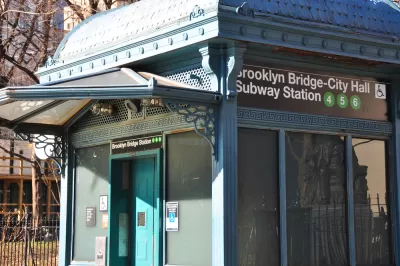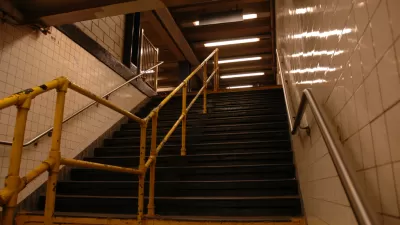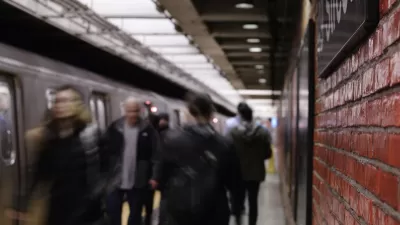After two lawsuits, the New York subway system has announced a 33-year timeline for making 95 percent of its stations fully accessible.

New York City’s subway system will finally become more accessible to people with disabilities or mobility challenges—in 33 years. As Michael Gold reports in The New York Times, “New York has lagged for years behind other major American cities in making its subway system accessible to people with disabilities: Just 126 of its 472 stations, or 27 percent, have elevators or ramps that make them fully accessible.”
As part of a settlement of two lawsuits, the Metropolitan Transportation Authority has committed to adding ramps and elevators to 95 percent of its stations by 2055. “Under the agreement, the transportation authority will make an additional 81 subway and Staten Island Railway stations accessible by 2025. It will make another 85 stations accessible by 2035, 90 more by 2045 and then 90 more by 2055.”
While the New York subway system’s age plays a role in its lack of accessible stations, other cities have done more to retrofit their own older systems. “More than two-thirds of stations in Boston, Philadelphia and Chicago meet the Americans With Disabilities Act’s compliance standards,” Gold notes.
“The changes required by the settlement will benefit a wide band of the populace who struggle to use narrow fare gates or climb subway stairs, including parents toting children in strollers, shoppers carrying large items home and airport travelers with luggage.”
FULL STORY: New York’s Subway System Vows to Be 95 Percent Accessible by 2055

Study: Maui’s Plan to Convert Vacation Rentals to Long-Term Housing Could Cause Nearly $1 Billion Economic Loss
The plan would reduce visitor accommodation by 25,% resulting in 1,900 jobs lost.

North Texas Transit Leaders Tout Benefits of TOD for Growing Region
At a summit focused on transit-oriented development, policymakers discussed how North Texas’ expanded light rail system can serve as a tool for economic growth.

Using Old Oil and Gas Wells for Green Energy Storage
Penn State researchers have found that repurposing abandoned oil and gas wells for geothermal-assisted compressed-air energy storage can boost efficiency, reduce environmental risks, and support clean energy and job transitions.

Santa Barbara Could Build Housing on County Land
County supervisors moved forward a proposal to build workforce housing on two county-owned parcels.

San Mateo Formally Opposes Freeway Project
The city council will send a letter to Caltrans urging the agency to reconsider a plan to expand the 101 through the city of San Mateo.

A Bronx Community Fights to Have its Voice Heard
After organizing and giving input for decades, the community around the Kingsbridge Armory might actually see it redeveloped — and they want to continue to have a say in how it goes.
Urban Design for Planners 1: Software Tools
This six-course series explores essential urban design concepts using open source software and equips planners with the tools they need to participate fully in the urban design process.
Planning for Universal Design
Learn the tools for implementing Universal Design in planning regulations.
Ascent Environmental
Borough of Carlisle
Institute for Housing and Urban Development Studies (IHS)
City of Grandview
Harvard GSD Executive Education
Toledo-Lucas County Plan Commissions
Salt Lake City
NYU Wagner Graduate School of Public Service





























